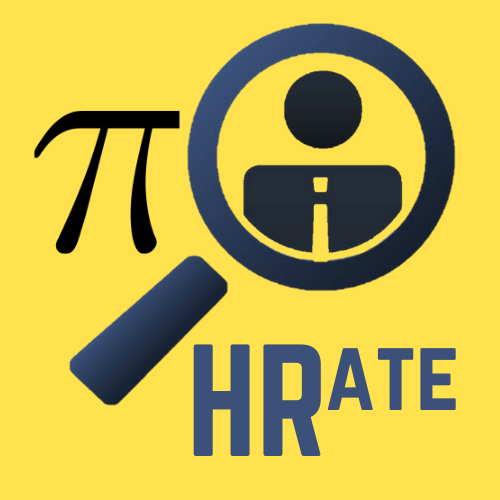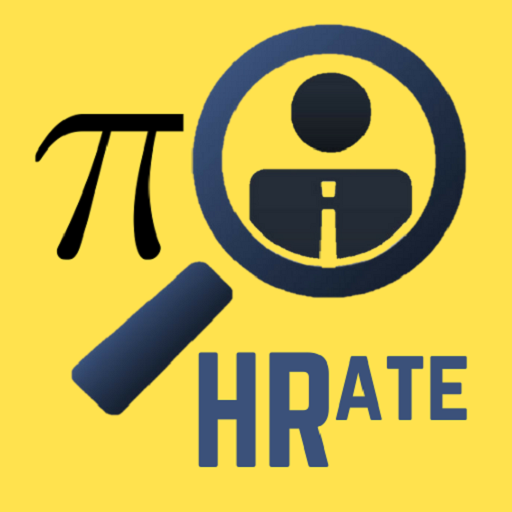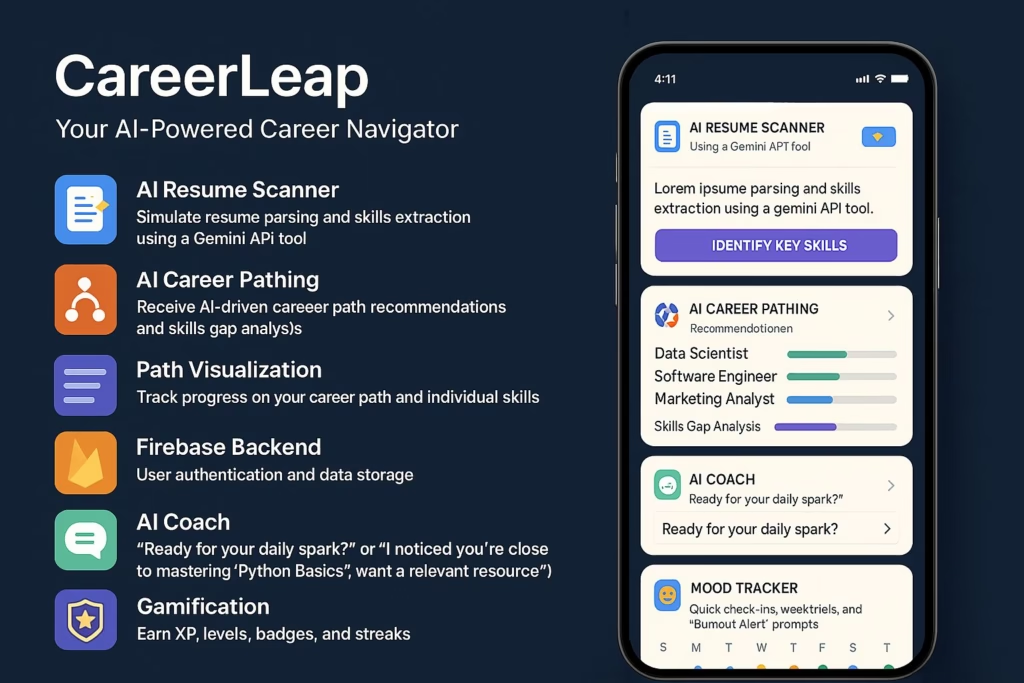Beyond the Resume: Acing Google Interviews: Technical and Behavioral

Google. The name itself resonates with innovation, technological advancement, and a unique, influential company culture. It stands as a pinnacle aspiration for countless tech professionals globally. However, securing a position at Google transcends merely possessing an impressive resume; it requires navigating one of the most rigorous and comprehensive Google hiring process structures in the industry. Google’s interviews are renowned for their depth, meticulously challenging candidates not only on their technical acumen but also on their cultural alignment and unique approaches to problem-solving. This comprehensive guide is designed to demystify the intricacies of Google interviews, with a specific focus on excelling in both the demanding technical interviews Google conducts and the crucial behavioral interviews Google utilizes to assess candidates for critical attributes like “Googleyness.” We will delve into the distinct characteristics that define these Google interviews, offer actionable strategies for tackling common interview questions Google frequently poses, and outline the essential steps for effective preparation for Google interviews to significantly enhance your chances of success. Move beyond relying solely on your resume; it’s time to understand the nuances required to ace the entire Google interview experience.
Understanding the Google Hiring Funnel: A Strategic Overview
Before immersing ourselves in the specifics of interview preparation, gaining a clear perspective on where interviews fit within the broader Google hiring process is advantageous. While the exact structure can vary based on the specific role, department, and geographic location, a typical trajectory generally includes several key stages:
- Application Screening: Your initial application, resume, and any supplementary materials are rigorously reviewed to ascertain alignment with the role’s requirements and Google’s standards.
- Recruiter Screen: A preliminary conversation with a Google recruiter serves to evaluate fundamental qualifications, gauge your genuine interest in the company, and assess your initial cultural fit.
- Phone Interviews (Technical/Behavioral): Often comprising one or two remote sessions, these interviews focus intensely on core technical skills or specific behavioral competencies.
- On-site (or Virtual) Interviews: This represents the most intensive phase, typically involving a series of 4 to 5 distinct interviews. These sessions comprehensively cover a wide spectrum of technical and behavioral topics, forming the core of the assessment.
- Hiring Committee Review: Feedback gathered from all interviewers is meticulously compiled and presented to a dedicated Hiring Committee. This committee makes a hire/no-hire recommendation based on a holistic evaluation of the candidate’s performance across all interview stages.
- Executive Review & Offer Extension: Following committee approval, the hiring manager typically conducts a final review before extending a formal job offer.
- Team Matching (Post-Offer Possibility): In certain scenarios, particularly for technical roles, the process of matching a candidate with a specific team might occur subsequent to the initial offer being extended, ensuring optimal role alignment.
Our primary focus remains squarely on the interview stages – the critical juncture within the Google hiring process where you have the opportunity to demonstrate your capabilities directly. Mastering both the technical and behavioral components is paramount to successfully navigating these assessment hurdles. Effective preparation for Google interviews necessitates a holistic approach, ensuring readiness for every facet of this demanding process.

Part 1: Mastering Google’s Technical Interviews – The Core Assessment
Google’s technical interviews are meticulously crafted to evaluate your foundational computer science knowledge, your ability to translate complex problems into efficient, well-structured code, and your inherent problem-solving capabilities, often under considerable time pressure. Whether your target role is Software Engineer, Data Scientist, or another technical discipline, anticipate rigorous assessments designed to probe your depth of understanding.
Key Areas Assessed in Google Technical Interviews:
- Data Structures and Algorithms: This is the non-negotiable cornerstone. Google expects candidates to possess a profound understanding of common data structures and algorithms, coupled with the acumen to identify and apply the most suitable ones for specific problems. Mastery of algorithms and efficient use of data structures are critical prerequisites for succeeding in Google technical interviews.
- Coding Proficiency: The ability to write clean, efficient, and error-free code in a language you are most comfortable with (commonly C++, Java, Python, or Go) is essential. You will likely be asked to write code live, typically within a shared online editor or on a physical/virtual whiteboard.
- Problem-Solving Acumen: Interviewers assess your approach to unfamiliar challenges. Can you dissect a problem effectively, explore various potential solutions, critically analyze trade-offs, and ultimately converge on an optimal strategy? Your thought process and methodology are often valued more highly than the final answer itself.
- System Design (for Mid-Level and Senior Roles): More experienced candidates will encounter system design questions. These assess your ability to conceptualize, design, and build scalable, reliable, and efficient distributed systems, evaluating your understanding of architectural patterns, trade-offs, and performance considerations.
- Complexity Analysis (Big O Notation): A fundamental requirement is the ability to meticulously analyze the time and space complexity of your solutions using Big O notation. Understanding and articulating computational efficiency is deeply ingrained in Google’s engineering ethos.
Common Google Technical Interview Question Categories & Strategic Approaches:
1. Arrays & Strings:
Typical Question: “Given an array of integers nums and an integer target, return the indices of the two numbers that sum up to target.”
Strategic Approach: Begin by considering a brute-force solution (e.g., nested loops, yielding O(n^2) complexity). Subsequently, focus on optimization. Employing a hash map (or dictionary) allows for storing numbers and their indices, enabling an average O(1) lookup for the required complement, thus achieving an overall O(n) solution. Always discuss both the naive and optimized approaches.
2. Linked Lists:
Typical Question: “Implement a function to reverse a singly linked list.”
Strategic Approach: This task requires meticulous pointer manipulation. Utilize three pointers: previous, current, and next. Iterate through the list, systematically redirecting the next pointer of the current node to point towards previous. Ensure you handle edge cases, such as empty lists or lists containing only a single node.
3. Trees & Graphs:
Typical Question: “Find the Lowest Common Ancestor (LCA) of two nodes within a Binary Search Tree (BST).”
Strategic Approach: The LCA property in a BST simplifies considerably. If both target nodes are numerically smaller than the current node, the LCA resides in the left subtree. Conversely, if both are larger, it lies within the right subtree. If one node is smaller and the other is larger (or equal), the current node itself is the LCA. Be prepared to discuss both recursive and iterative implementations.
4. Sorting & Searching:
Typical Question: “Consider a matrix where each row and column is sorted in ascending order. Determine if a specific target value exists within this matrix.”
Strategic Approach: A straightforward, albeit inefficient, method involves iterating through every element (O(N*M) complexity). A more optimized technique involves starting the search from either the top-right or bottom-left corner. If the current element matches the target, confirm its presence. If the element exceeds the target, traverse leftward (from the top-right start); if it’s less than the target, move downward. This strategy effectively narrows the search space, often yielding an O(N+M) solution.
5. Dynamic Programming:
Typical Question: “Given a set of available coin denominations and a target monetary amount, calculate the minimum number of coins required to achieve that exact amount.” (Classic Coin Change problem)
Strategic Approach: Identify overlapping subproblems and the principle of optimal substructure. Employ a bottom-up methodology, constructing a table (typically an array) where dp[i] stores the minimum coins needed for amount i. Iterate systematically through possible amounts and coin denominations to populate this table. Proper initialization (e.g., using infinity for impossible amounts) is crucial.
6. System Design:
Typical Question: “Conceptualize and design a URL shortening service, akin to bit.ly.”
Strategic Approach: Commence by defining both functional requirements (e.g., shortening URLs, redirecting) and non-functional requirements (e.g., scalability, availability, latency). Outline the API design (e.g., create_short_url, redirect_url). Detail the core mechanism: hashing the long URL to generate a unique short code. Discuss database considerations (SQL vs. NoSQL), storage strategies, scalability solutions (load balancing, caching), unique ID generation methodologies, and potential challenges like hash collisions. Emphasize the associated trade-offs for each decision.
Effective Preparation for Google Technical Interviews:
- Reinforce CS Fundamentals: Dedicate time to revisiting core algorithms, data structures, operating systems principles, database concepts, and networking fundamentals. Aim for a deep conceptual understanding beyond rote memorization.
- Consistent Practice: Leverage practice platforms such as LeetCode, HackerRank, AlgoExpert, and GeeksforGeeks. Prioritize problems frequently associated with Google or tagged as “Medium/Hard” difficulty. Don’t merely solve problems; strive to understand the underlying logic and alternative solutions comprehensively. Mastering these coding challenges Google presents is key.
- Master Big O Notation: Integrate the analysis of time and space complexity (using Big O notation) into your practice for every solution you devise. This analytical skill is vital for demonstrating competence in technical interviews Google values.
- Conduct Mock Interviews: Simulate the actual interview environment by conducting mock interviews with peers, mentors, or through specialized online services. This practice helps manage interview anxiety and refines your ability to articulate your thoughts clearly. Crucially, practice explaining your thought process aloud.
- Choose Your Language Strategically: Select a programming language you are thoroughly proficient in. Python, Java, and C++ are popular choices. Ensure familiarity with the language’s standard libraries pertinent to data structures and common programming tasks.
- Articulate Your Thought Process: Google interviewers prioritize understanding your thinking. Clearly communicate your approach, stated assumptions, and potential optimizations before writing code. If you encounter difficulties, verbalize where you are stuck and the alternative paths you are considering. This transparency is a crucial component of the problem-solving assessment during Google interviews.
- Test Your Code Rigorously: Always consider edge cases, invalid inputs, and methods for thoroughly testing your implementation. Mentally walk through simple test cases or jot them down.
Successful preparation for Google interviews is a sustained effort demanding consistent practice and deep, foundational knowledge.
Part 2: Decoding Google’s Behavioral Interviews – Unveiling Googleyness
While technical proficiency is a prerequisite, Google places significant emphasis on *how* candidates work, collaborate, and approach challenges. This qualitative assessment is often distilled into the concept of “Googleyness.” Understanding and demonstrating these attributes is crucial for navigating behavioral interviews Google conducts.
Defining “Googleyness”: More Than Just Culture Fit
“Googleyness” transcends a simple check against a predefined cultural mold. It represents a collection of core attributes that empower individuals and teams to excel within Google’s uniquely dynamic and innovative environment. Key elements typically encompass:
- Collaboration & Teamwork: The capacity to function effectively within diverse teams, readily share knowledge, and provide support to colleagues.
- Comfort with Ambiguity: The ability to thrive even when the path forward is unclear, demonstrating adaptability to evolving circumstances and priorities.
- Bias for Action: A proactive tendency to tackle problems head-on and drive initiatives forward, rather than passively waiting for explicit direction.
- Passion & Curiosity: Genuine enthusiasm for technology, continuous learning, and engaging with complex challenges. Intellectual curiosity serves as a powerful catalyst for innovation.
- Effective Leadership: The capability to lead, influence outcomes, and drive results, irrespective of formal hierarchical position. This includes taking initiative and demonstrating ownership.
- Attention to Detail: Ensuring meticulousness and accuracy in all aspects of work.
- Adaptability: The swift acquisition of new skills and the seamless integration of new technologies and methodologies.
The STAR Method: Your Essential Framework for Behavioral Success
Google heavily emphasizes the STAR method (Situation, Task, Action, Result) for structuring responses during its behavioral interviews. This methodical approach ensures candidates provide specific, concise, and impactful examples that clearly illustrate their experiences and capabilities.
- Situation: Clearly describe the background context – the project, the challenge faced, the team involved, and the relevant timeframe. Specificity is key.
- Task: Articulate your precise role and responsibilities within that specific situation. What were you tasked with achieving?
- Action: Detail the specific steps you personally took to address the task or overcome the challenge. Concentrate on your individual contributions, decisions, and behaviors. Utilize “I” statements predominantly.
- Result: Quantify the outcome of your actions whenever feasible. What was the tangible impact? What key learnings did you derive?
Common Google Behavioral Interview Questions & Strategic Answering Techniques:
1. Navigating Challenges and Failures:
Question Example: “Describe a time you encountered a significant challenge or experienced a notable failure in a professional setting. What was the situation, and what lessons did you learn from it?”
Strategic Approach: Select a genuine challenge where you played a key role, even if external factors contributed. Employ the STAR method meticulously. Place substantial emphasis on the specific lessons learned and how you subsequently applied that knowledge. Avoid deflecting blame; concentrate on your response, your learning process, and your subsequent growth. This showcases resilience and a crucial growth mindset, fundamental aspects of Googleyness.
2. Teamwork and Conflict Resolution:
Question Example: “Recount an instance where you had to collaborate with a difficult team member or mediate a conflict within your team.”
Strategic Approach: Utilize the STAR framework. Clearly outline the situation (the nature of the conflict or difficulty), your task (to resolve it or maintain productive collaboration), the specific actions you took (e.g., direct communication, seeking common ground, refocusing on shared objectives), and the positive result achieved (e.g., conflict resolution, improved team dynamics, successful project completion). This demonstrates vital collaboration and conflict-resolution skills, key traits sought in Google interviews.
3. Demonstrating Initiative and Leadership:
Question Example: “Tell me about a time you proactively took initiative or demonstrated leadership qualities without explicit instruction.”
Strategic Approach: Employ STAR to illustrate a situation where you identified an issue or opportunity, assumed ownership, proposed a viable solution, and subsequently executed it. Highlight your proactive nature, your ability to influence stakeholders, and the positive impact stemming from your initiative. This directly addresses the “bias for action” and leadership potential valued in Google interviews.
4. Managing Ambiguity and Adaptability:
Question Example: “How do you typically respond to ambiguity or situations where project requirements undergo unexpected changes?”
Strategic Approach: Use STAR to provide a concrete example. Detail your process: seeking clarification from stakeholders, assessing the potential impact of the changes, adjusting your work plan accordingly, communicating effectively about modifications, and maintaining focus on core objectives. Emphasize your capacity to remain productive and deliver results even amidst uncertainty. This highlights your comfort with ambiguity and essential adaptability.
5. Behavioral Problem Solving:
Question Example: “Describe a complex problem you successfully solved. What was your strategic approach?”
Strategic Approach: While technical interviews Google conducts focus on coding challenges, behavioral questions may explore complex non-technical problems (e.g., project management hurdles, stakeholder alignment issues). Use STAR to detail how you analyzed the situation, brainstormed potential solutions, evaluated the pros and cons of each option, implemented your chosen strategy, and what the eventual outcome was. Connect this back to your structured thinking and analytical abilities.
Essential Strategies for Answering Behavioral Questions Effectively:
- Prepare Specific, Concrete Examples: Before your interviews, brainstorm at least 5-7 robust examples from your career that exemplify different facets of Googleyness. Map these prepared examples to potential questions you might encounter.
- Quantify Your Results: Whenever possible, incorporate numerical data to illustrate the impact of your actions (e.g., “increased efficiency by 15%,” “reduced bug resolution time by 20%,” “boosted customer satisfaction scores by 10 points”).
- Be Concise yet Comprehensive: Utilize the STAR structure efficiently. Provide clear, direct answers while offering sufficient detail for the interviewer to grasp the context, your role, and the results achieved.
- Maintain Focus on Your Contributions: While teamwork is important, interviewers need to understand your specific involvement. Consistently use “I” statements (e.g., “I identified,” “I proposed,” “My contribution was…”).
- Embrace Honesty and Reflection: Authenticity is paramount. Avoid fabricating scenarios. If you made mistakes, acknowledge them transparently and discuss the valuable lessons learned. This demonstrates maturity and self-awareness.
- Align with Google’s Values: Consciously choose examples and frame your answers to reflect the core attributes Google values: collaboration, initiative, adaptability, curiosity, and impact.
Mastering the nuances of the behavioral interviews Google employs requires introspection, strategic preparation, and practice in effectively articulating your professional experiences.
Connecting Technical Skills with Googleyness in Google Interviews
It’s vital to recognize that Google interviews rarely operate in silos; the technical and behavioral assessments are often intertwined. The manner in which you navigate a coding challenge Google presents can inherently reveal behavioral traits:
- Communication Clarity: How effectively do you articulate your problem-solving approach? Do you proactively seek clarification or ask pertinent questions?
- Collaborative Spirit: If provided with hints or working alongside a peer interviewer, how adeptly do you incorporate feedback and adapt your strategy?
- Resilience Under Pressure: How do you react when faced with a challenging problem or when you realize your initial approach might be suboptimal? Do you demonstrate methodical troubleshooting or succumb to frustration?
Even during technical interviews Google conducts, your approach to problem-solving and your communication style inherently reveal critical aspects of your Googleyness. Similarly, behavioral questions might occasionally reference technical scenarios, asking how you managed technical challenges or collaborated on technical projects. The overarching goal is a holistic assessment of your capabilities and potential fit. Your ability to seamlessly integrate both technical expertise and behavioral competencies is fundamental to succeeding in Google interviews.
Post-Interview Process: The Hiring Committee and Team Matching
Following the completion of your interviews, the collected feedback undergoes a rigorous review process by Google’s Hiring Committee. This committee, typically comprised of seasoned Googlers, meticulously evaluates the interview feedback alongside your resume and application materials. They seek consistent signals across all interviewers regarding your technical proficiency, your problem-solving methodologies, and the demonstration of key Googleyness attributes. Ultimately, they render a hire/no-hire recommendation based on this comprehensive assessment.
Should the Hiring Committee endorse your candidacy, the subsequent phase often involves team matching. Recruiters and hiring managers collaborate to identify a team whose specific needs, projects, and culture align effectively with your skills, experience, and career aspirations. This stage offers you a valuable opportunity to engage in further dialogue, ask pertinent questions about specific teams and projects, and ensure a mutually beneficial long-term fit. This final alignment is crucial for fostering success for both you and Google.
Conclusion: Your Strategic Path to Google
Securing a role at Google is an ambitious yet entirely attainable objective. Success is fundamentally predicated on thorough, strategic, and well-rounded preparation for Google interviews. This involves cultivating a deep understanding of algorithms and data structures, achieving proficiency in coding, and mastering the art of articulating your problem-solving process. Equally critical is the demonstrated ability to embody Googleyness, showcased through insightful responses during the behavioral interviews Google employs, highlighting your collaborative spirit, initiative, passion, and adaptability.
By focusing diligently on mastering the technical interviews Google conducts, practicing the STAR method for behavioral interviews Google uses, and continuously honing your problem-solving skills, you significantly enhance your prospects. Remember to maintain authenticity, cultivate curiosity, and approach the entire Google hiring process with proactive engagement. Your journey through the Google hiring process is ultimately a comprehensive test of both your technical prowess and your inherent fit within the unique culture fostered by Googleyness. Prepare diligently, showcase your best self, and embark on your path to becoming a Googler.
- Stop Preparing for the Google Interview of 2020. Here’s What Changed.
- We Asked 100 Google Engineers How They Use Gemini: Here’s What We Learned
- Why Your Next Promotion Might Depend on Your AI Literacy (Not Your Code)
- From Marketing to Machine Learning: How One Googler Reinvented Their Career
- A Tuesday at Google: Why Our Offices Are Buzzing Again





One Response
[…] Interviewer: What are some common Google interview questions candidates should anticipate, both technical and behavioral? […]